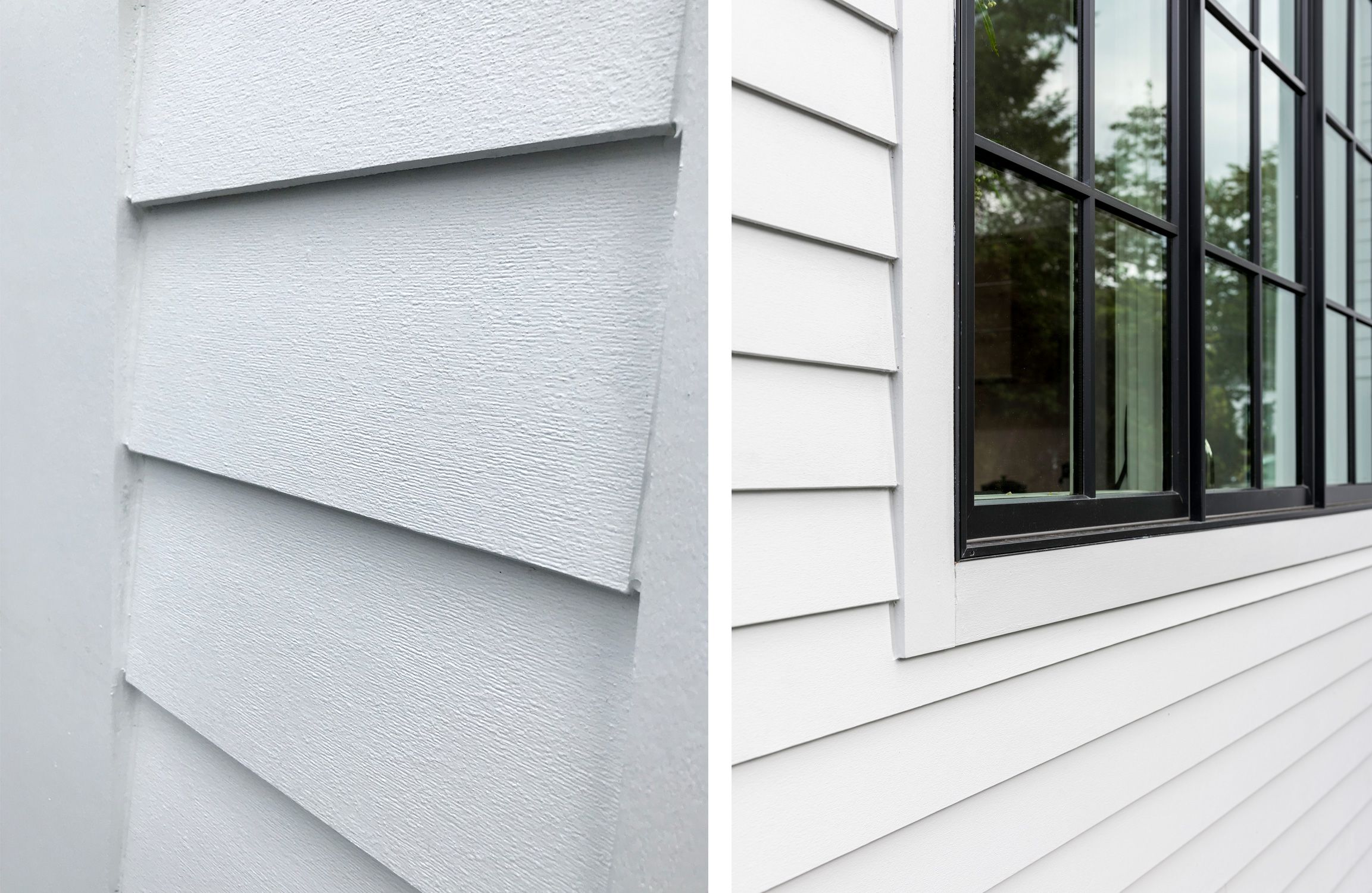Your home’s exterior not only protects you from the elements but adds to your home’s curb appeal and value. To achieve the right function and look, you can choose from a wide variety of siding options, whether you’re drawn to traditional wood or a modern composite.
Our guide will detail the different siding materials available, their benefits, and other things to keep in mind when choosing siding for your home.
What Siding Material Types Are Available?
The right siding can complement your home’s architectural style and boost its value. Each material has pros and cons that can significantly affect your home’s durability and look.
Vinyl Siding
Vinyl siding has become popular because it’s affordable, durable, and low-maintenance. It comes in various styles and colors, including options that mimic the appearance of wood grain or stone.
Standard vinyl siding is known for being resilient and easy to install. It’s resistant to dents and scratches, and because the color is part of the material, minor damage is less noticeable. Maintenance is simple, requiring only occasional cleaning with a brush and hose.
Insulated vinyl siding is a little more expensive, but offers better energy efficiency. This type of siding includes a layer of rigid foam insulation.
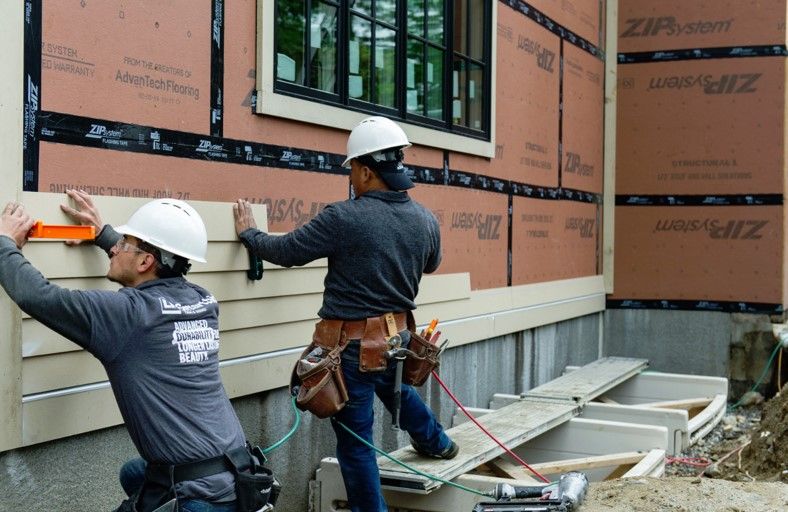
Fiber Cement Siding
Fiber cement siding offers an excellent balance of durability, appearance, and versatility. It uses a mixture of cement, sand, and cellulose fibers, mimicking the look of wood, stucco, or masonry while offering superior resistance to weather, pests, and fire.
Fiber cement siding is highly resistant to moisture, rot, and pests, making it an excellent choice for coastal areas or regions with extreme weather. Because it’s noncombustible, it may even earn you insurance discounts in some areas. It also lasts decades with proper installation and care.
On the downside, installing fiber cement siding requires special tools and expertise. The heavy material can produce harmful dust when cut, necessitating proper safety precautions. For these reasons, fiber cement installation is typically best left to professionals.
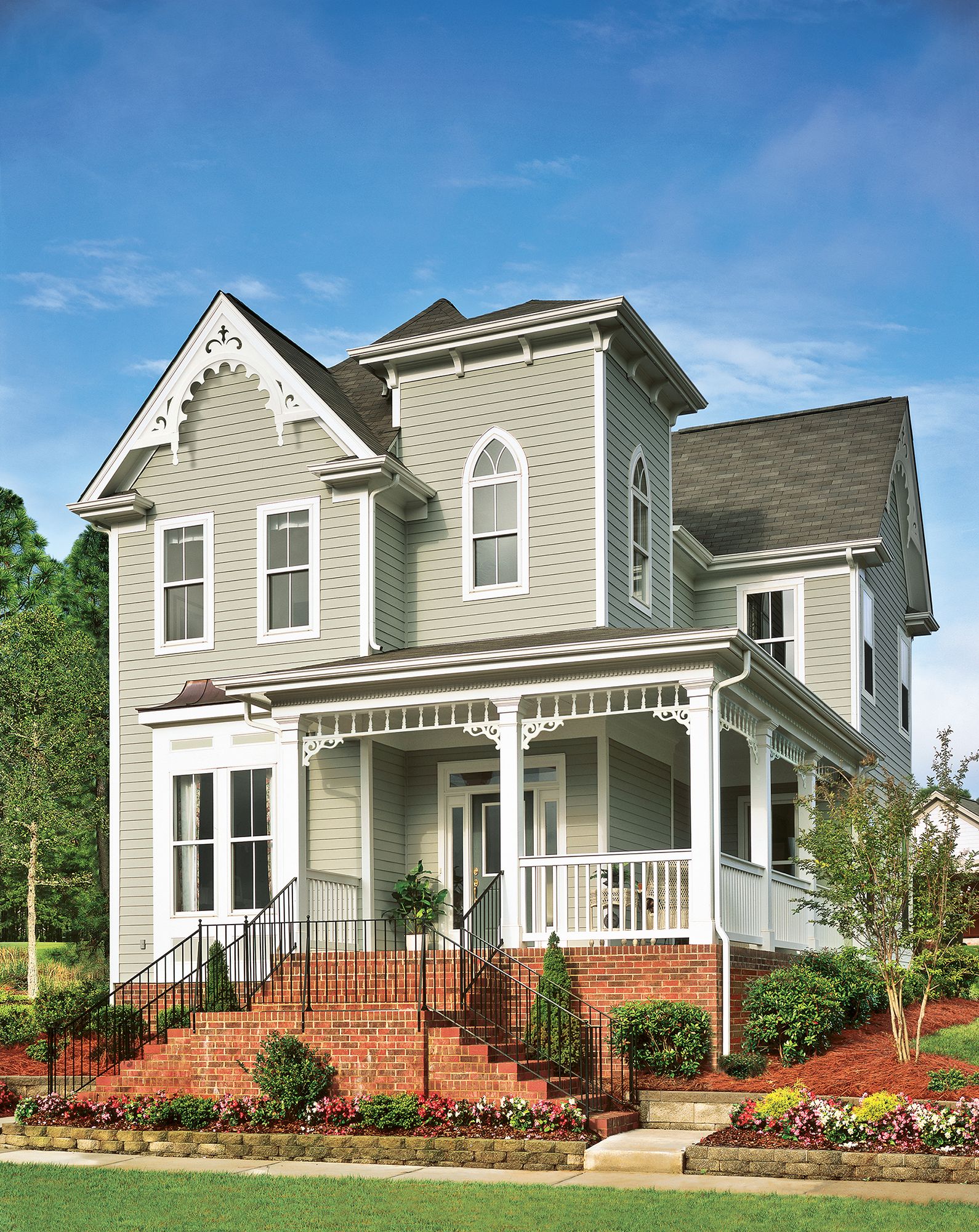
Metal Siding
Metal siding offers a contemporary look and exceptional durability. It’s resistant to fire, insects, and rot, making it a low-maintenance option. Metal siding typically falls into one of two buckets: aluminum or steel.
Aluminum siding, primarily available in clapboard style, offers many of the same benefits as vinyl siding. One notable advantage is that you can paint it, allowing color changes over time. However, aluminum is prone to denting and has limited style options compared to other materials.
Steel siding provides superior strength and impact resistance compared to aluminum. It’s available in various styles and finishes, including those that mimic wood grain. While more expensive than aluminum, steel siding offers excellent longevity and can withstand harsh weather conditions.
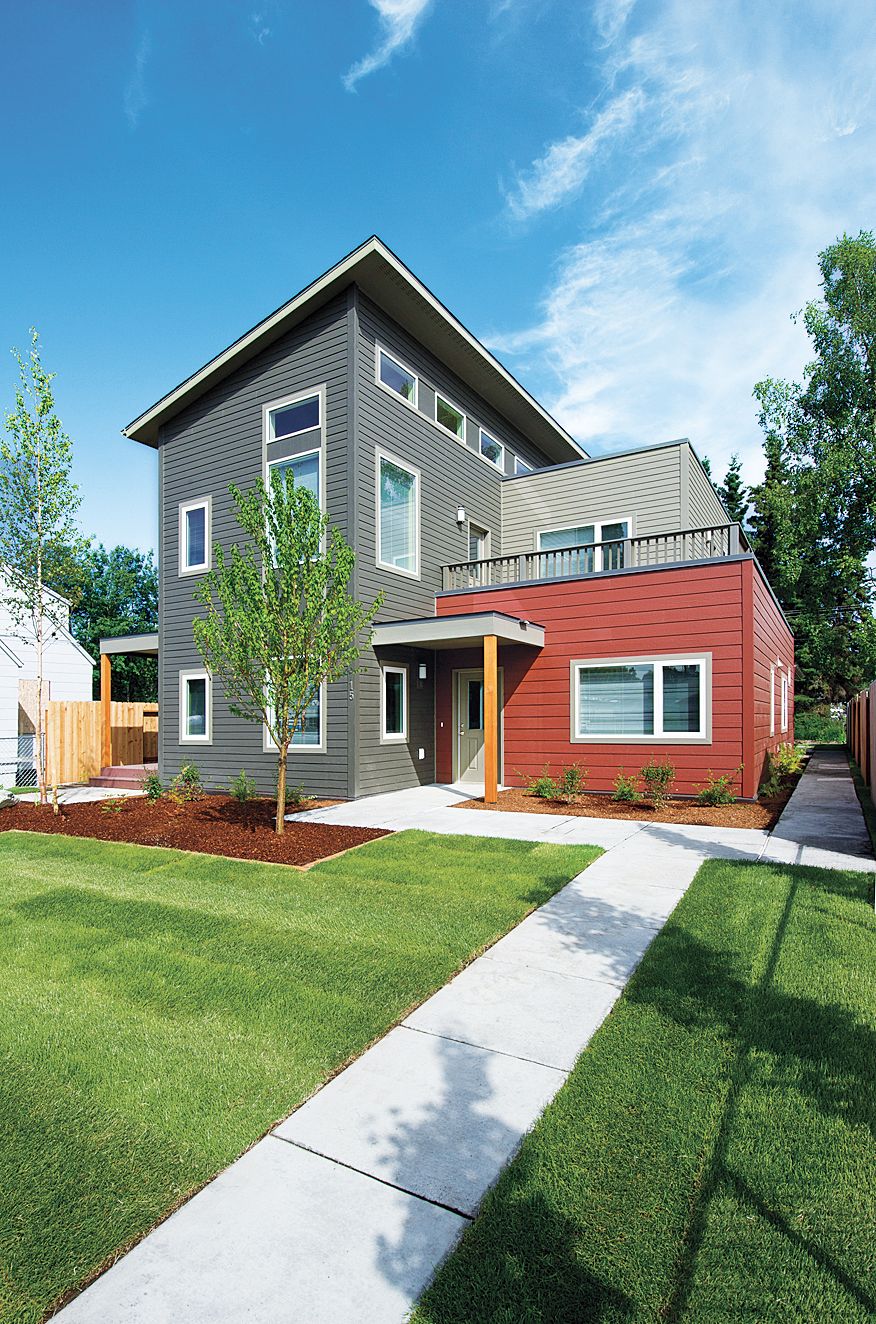
Stone Veneer Siding
Stone veneer siding provides the luxurious appearance of natural stone without the weight and installation complexities of full masonry. It’s an excellent way to add visual interest to specific areas of your home’s exterior.
Natural stone veneer uses thin slices of actual stone atop a wooden backing. It offers authentic texture and color variations but is more expensive and challenging to install than manufactured options.
Manufactured stone veneer is similar but uses cement, aggregates, and pigments molded to resemble natural stone. It’s lighter and easier to install than natural stone while still providing a realistic appearance. This option requires little maintenance beyond occasional cleaning and checking for mortar cracks.
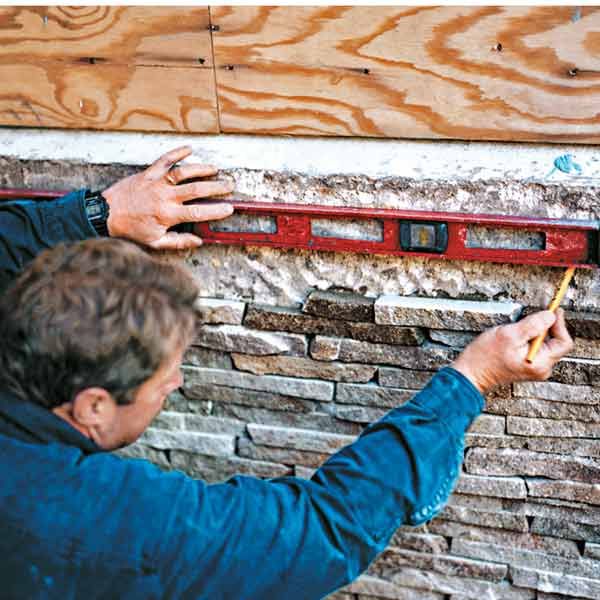
Brick Siding
Brick siding offers a classic, timeless look and exceptional durability. It’s fire-resistant, low-maintenance, and can last centuries with proper care. While the initial cost is higher than many other siding options, brick’s longevity and minimal upkeep requirements can make it cost-effective in the long run.
Stucco Siding
Stucco siding has a distinctive texture and is particularly popular in Southwestern and Mediterranean-style homes. It’s durable, fire-resistant, and can last decades with proper maintenance. Stucco can be tinted to almost any color, eliminating the need for painting, and its thickness provides additional insulation to your home.
Wood Siding
Wood siding offers a timeless, natural beauty that many homeowners find appealing. It comes in various styles, including board and batten, shakes, shingles, and clapboards.
Manufacturers mainly use pine and cedar for exterior siding. Cedar, including eastern white, red, and Alaskan yellow varieties, is naturally resistant to rot and insects, making it a popular choice. While pine can be more affordable, it lacks cedar’s natural resistance to decay and pests.
Wood siding requires regular maintenance to preserve its appearance and integrity. Inspect it for cracks or damage annually and plan to refinish every four to six years. Solid-color stain offers the best protection against weather and UV damage. Clear exterior finishes with UV protection are available for those preferring a natural wood grain look.
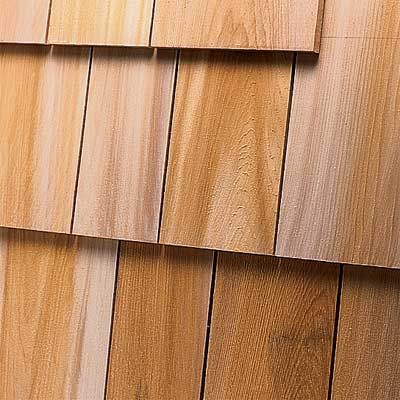
For homeowners who appreciate the look of wood but want improved durability, engineered wood siding is a great compromise. This option combines wood fibers with resins to create a more stable and resistant product. Engineered wood siding often comes preprimed and in longer lengths, reducing the number of seams in the finished installation.
Factors To Consider When Selecting House Siding
Consider the following factors to determine the best siding option for your specific needs.
Climate and Weather Conditions
Different materials perform better in certain weather conditions. For instance, vinyl siding might not be the best choice in areas prone to extreme heat, as it can warp or melt. Conversely, fiber cement siding stands up well to moisture and is an excellent option for coastal areas prone to hurricanes, storms, and flooding.
Maintenance Requirements
Consider how much time and effort you’re willing to invest to maintain your siding. Some materials, like vinyl, require minimal maintenance beyond occasional cleaning, while wood siding needs regular painting or staining to maintain its appearance and protective qualities.
Cost and Budget Considerations
The cost of siding installation varies by material and quality. While initial costs are important, consider long-term expenses such as maintenance, repairs, and potential replacements. Some more expensive options might prove cost-effective over time due to their durability and low maintenance needs.
Return on Investment
Durability, appearance, and energy efficiency are key factors when considering siding options to increase home value. Fiber cement siding often tops the list for its longevity, low maintenance, and attractive appearance. Vinyl siding, particularly insulated options, can also provide a good return on investment due to its affordability and energy-saving properties. Stone veneer, especially on the lower portion of the home’s exterior, can significantly boost curb appeal and value.
Siding Choices for Extreme Weather Conditions
Homes in areas prone to extreme weather require siding that can withstand harsh conditions. Here are some options suited for challenging climates:
- Hurricane-resistant siding: Fiber cement siding is an excellent choice for coastal areas prone to hurricanes. Its moisture resistance and ability to withstand high winds make it ideal for these regions. Some vinyl siding products are also engineered to resist high winds and are worth considering.
- Fire-resistant siding options: In areas at risk of wildfires, fire-resistant siding is crucial. Fiber cement, brick, and stucco are excellent choices for their non-combustible properties. Some localities may even offer insurance discounts for homes with fire-resistant siding.
DIY vs. Professional Siding Installation
Deciding to install siding yourself or hire a professional depends on various factors, including the type of siding, your skill level, and available time.
When To Attempt DIY Installation
Some siding materials, like vinyl, are more DIY-friendly than others. If you have experience with home improvement projects and the necessary tools, installing vinyl siding could be a feasible project to do on your own. However, it’s crucial to thoroughly research proper installation techniques and local building codes before proceeding.
When To Hire a Pro
We highly recommend professional installation for most siding materials, especially fiber cement, brick, and stone veneer. Professionals have the expertise, tools, and experience to properly install the siding, leading to optimal performance and longevity. They can also navigate local building codes and provide warranties on their work.
Our Conclusion
Choosing the best siding for your house involves balancing style, durability, maintenance requirements, and cost. While traditional options like wood offer timeless appeal, modern materials such as fiber cement and insulated vinyl provide excellent performance with lower maintenance needs. Consider your local climate, long-term costs, and style preferences to choose the best option for your home.
Remember that proper installation is key to maximizing the benefits of any siding material. Ensure installation meets local building codes and manufacturer specifications. With the right choice and correct installation, your new siding can enhance your home’s beauty, protection, and value for years to come.
